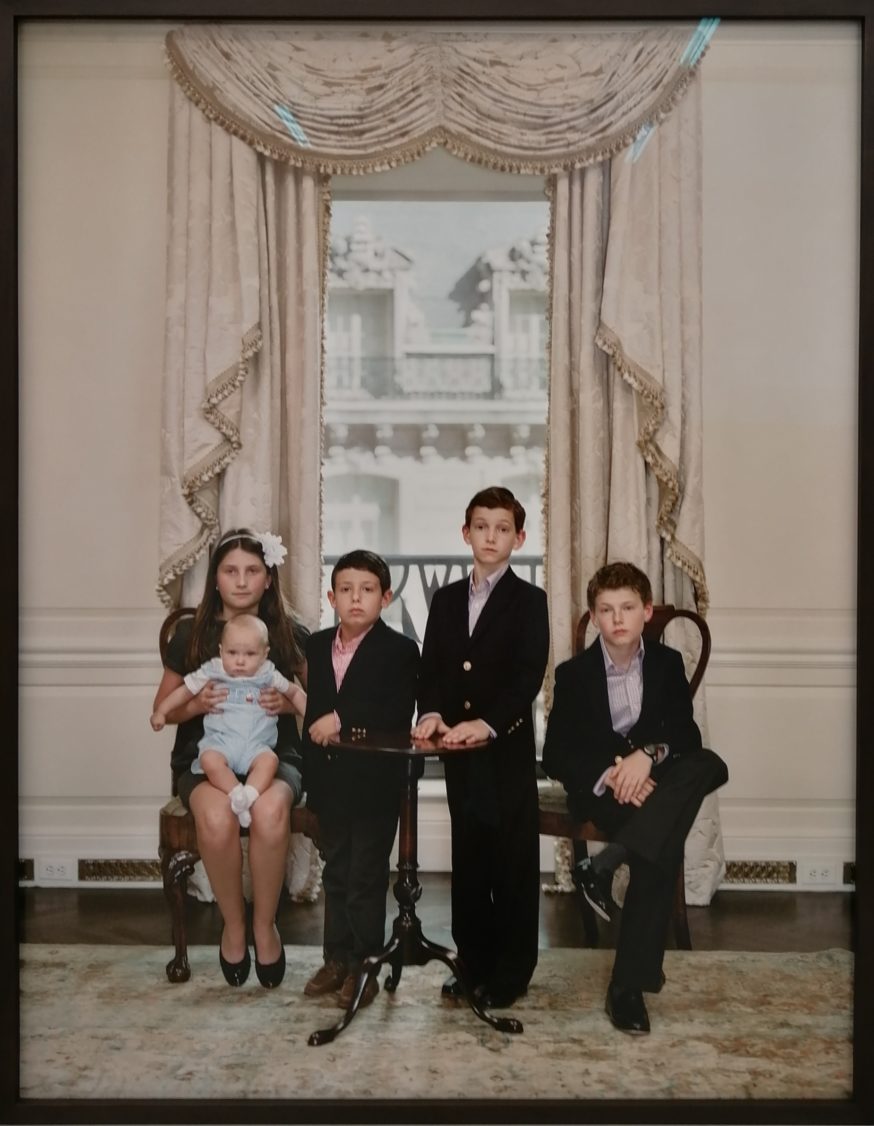So with face mask firmly in place I made my way to the Marian Goodman Gallery in London’s Mayfair area. I had a timed appointment to visit, so before going in I locked my bike to a lamppost and sat in a fairly deserted Golden Square enjoying a coffee and soaking up the summer sun. I wasn’t entirely sure what I was going to see in the gallery beyond photography by a Dutch artist.

The galleries are filled with large format photographic portraits, and nobody is smiling for the camera. I refer to the notes and read that Rineke Dijkstra “is most known for her photographic portraits” and “in particular, she is known for foregrounding the intimacy of the photographic medium: how time is embodied to reveal transitory moments or passages of change; revelation and reflection of the self”. I stare at the people in the photographs, they stare back with blank looks.

It’s the blank stares which are most striking, especially when the subjects are children. This one (above) is from the ongoing Family Portraits series “which began as a series of private commissions in 2012”. According to the handout “Dijkstra directs the children to pose with no particular facial expression, to be natural in front of the camera whilst aware that a portrait is being made”. This I find really interesting, especially at a time when we are so desensitised to photographic portraits by posed selfie culture and the instantly forgettable format of social media. Here, in these photos, nobody is trying to show their best side. Nobody pouts, at least not in a deliberate way. I think this is why these portraits become a challenge to the observer rather than something to stroll/scroll past. I find myself studying other details in the photos for clues to who these people are and what sort of lives they lead. There’s very little to go on and this adds to my fascination.

Upstairs the large, light and airy gallery space is lined with a series of photographic portraits each depicting the same three sisters between 2008 and 2014. As I walk around I see the gradual changes – not so much in their anatomical development but more in their engagement with the camera. It’s a confrontational experience.

For me, the most memorable part of this exhibition is the UK premiere of Night Watching (2019), “a video installation commissioned and first shown at the Rijksmuseum in Amsterdam in 2019”. This “three-screen video installation features 14 different groups of people observing and speaking in front of Rembrandt’s large iconic painting The Night Watch (1642)”. We watch them as they look back at the painting and discuss their individual responses to it.

The footage lasts for 35 minutes and I was unable to tear myself away. It’s an artwork about how we engage with art – what thoughts it can provoke – connections with our own experiences and reflections on who are are and our place in the world. And that’s what it’s all about. Brilliant stuff.








